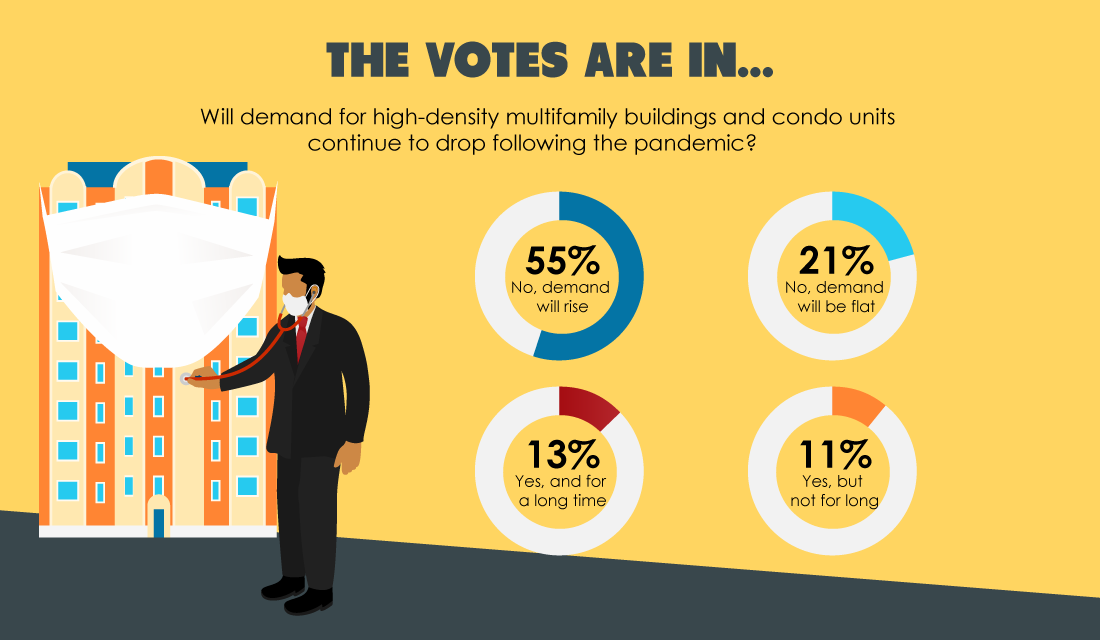In October, firsttuesday asked readers to weigh in on whether or not demand for high-density multi-family buildings and condo units would continue to drop following the pandemic.
According to poll results, more than half of our readers believe demand would actually go up. The rest of respondents were not quite as unanimous. The other 45% of readers had mixed answers, including:
- 21% saying demand would be flat;
- 13% saying demand would go down, for a long time; and
- 11% saying demand would go down, but not for long.
In comparison, readers were asked a similar poll a year prior. The prior results were much more varied in contrast to the current poll, with responses ranging from:
- 37% saying yes, demand would drop until a vaccine was available;
- 31% claiming there would be no effect on demand;
- 24% saying demand would go down, for a long time; and
- 7% saying demand would rise.
These two poll results create a revealing juxtaposition in sentiment, particularly the consolidation around the belief that demand would rise after the pandemic (7% in 2020 and 55% in 2021).
California’s housing landscape is an ever-changing force to be reckoned with. Maintaining a happy, healthy housing ecosystem is difficult to do – more so than usual when facing the aftermath of a recession. Last year, one of the housing market’s biggest obstacles was inventory shortage.
San Francisco is experiencing high demand for multi-family units – which is distinct compared to other parts of California. While the majority of homebuyers prefer single family residential (SFR) housing, there is a demand shift across the Bay area for multi-family housing units.
The most popular metros for condos in California as of June 2021 are:
- Sacramento, with 76% of condos selling above asking,
- Oakland, with 74% selling above asking,
- Oxnard, with 67% selling above asking,
- Riverside, with 60% selling above asking,
- San Diego, with 60% selling above asking,
- San Francisco, with 59% selling above asking; and
- Los Angeles, with 57% selling above asking.
Despite this high demand, multi-family housing has multiple factors working against it:
- restrictive zoning limitations; and
- not-in-my-backyard (NIMBY) advocates.
Despite these hurdles, the demand shift has made multi-family units flourish in the Bay area – as of 2021, there are 13,000 new multi-family units expected to be completed in the Bay Area alone, according to RENTCafé.
More exciting news for multi-family housing comes from Vallejo, California – in the form of an assembly line. Factory OS, a factory located in an old naval submarine factory, is creating full-blown apartment buildings on an assembly line. A more streamlined source of housing construction is a promising solution to many of the social distancing issues created out of the 2020 pandemic. Thus far, Factory OS has completed ten buildings in NorCal, with big plans to branch out further. This is good news for the construction of high-density, multi-family units.
The next peak for multi-family housing starts is likely to occur around 2024-2025, with the full recovery of all jobs lost to the 2020 recession and a crest of the next housing boom.



















